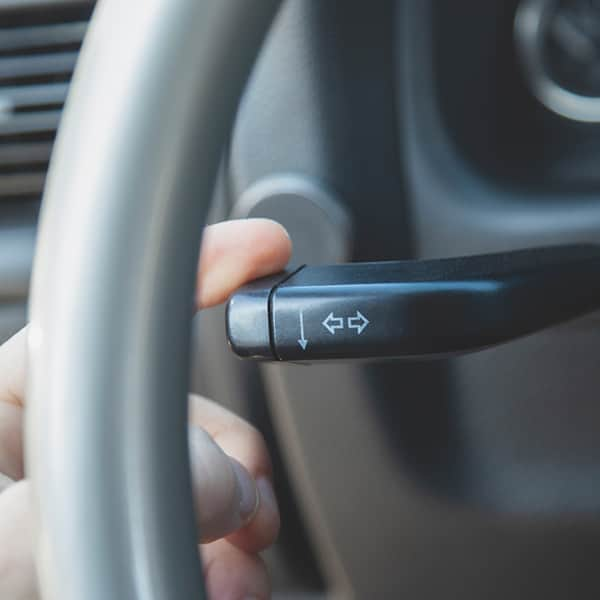
What percentage of the time would you say you use turn signals before making a turn or changing lanes on the road?
Some drivers view turn signals as a courtesy, but their use is actually required by law. Turn signals provide an effective means of communication to let other drivers know where you are going so that they can act accordingly. By communicating with vehicles that are both behind you and in front of you, you're doing your part to keep everyone safe on the road.
Dangers of Not Using Turn Signals
According to a driving habits study conducted by The Society of Automotive Engineers, nearly two million automobile crashes in the U.S. are attributed to failure to use turn signals. This is actually more than the number of auto accidents attribute to distracted driving! An estimated 25 percent of drivers don't use their turn signals while turning and about 48 percent of drivers don't use them when changing lanes. Here are some pieces of advice about how to effectively use turn signals on the road.
Signal In Advance
To give motorists around you enough time to see your signal, plan to flip on your turn signals approximately 100 feet ahead of you while driving in town. If you're exiting off of a highway or changing highway lanes, plan to signal even further in advance.
Signal Each and Every Time
Using turn signals should come naturally to drivers, and using them should be as easy as applying the gas and the brake pedal. Get into the good habit of using your turn signal each and every time you drive, even if you don't see any other drivers around you at that time. Turn signals are also very helpful to bicyclists and pedestrians who are sharing the road with you.
Signal Before You Brake
It's important to flip on your turn signal before applying your vehicle's brakes. This lets drivers behind you know why you are braking so that they can slow down behind you with enough room to stop, if necessary. Turn signals also help warm drivers who are in your blind spot that you are planning to alter your driving course. Always signal before you turn to make sure the path is clear to turn or change lanes.
Technology and Turn Signals
Because of the high crash rates associated with the lack of turn signal usage, some automobile engineers are looking into "smart turn signals" that remind drivers to use signals when changing directions. The technology would be "the perfect complement to the stability control system since stability control predominately prevents single-vehicle crashes, whereas the smart turn signal prevents multivehicle crashes," explained Richard Ponziani, president of RLP Engineering. Will high tech turn signals features soon come to the rescue of forgetful drivers? It sure seems like this is the direction of future driving!

